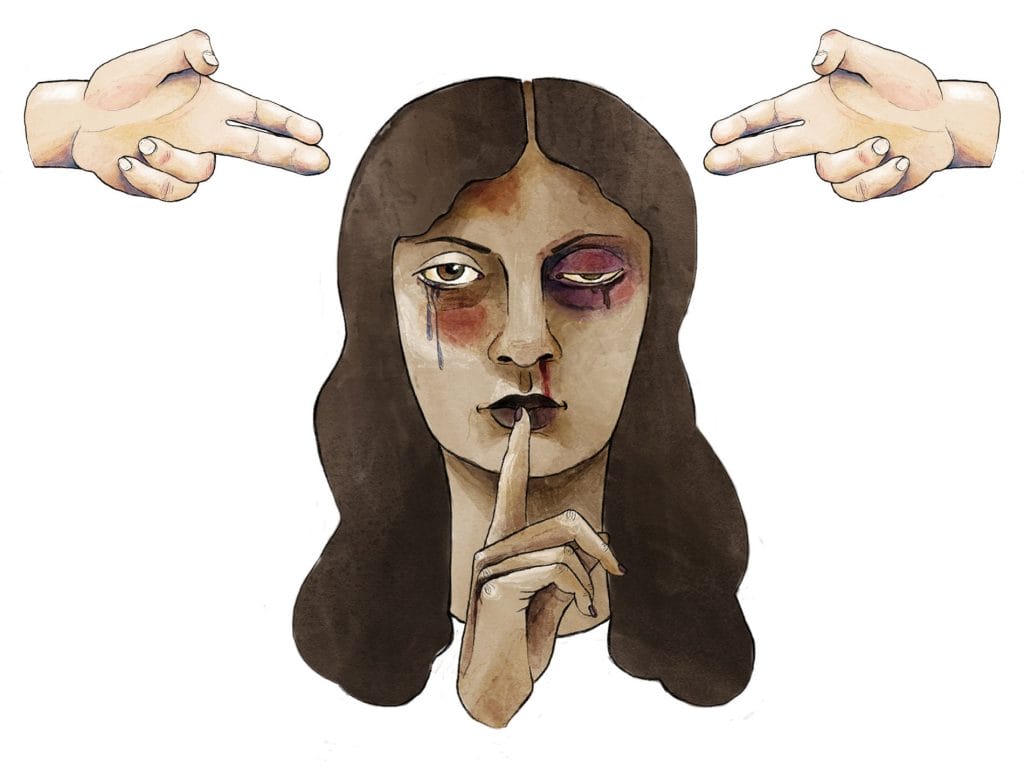New FBI report shows an increase in hate crimes in 2016

Illustration by Lizzy Cox.

Hate crimes in the United States increased by 4.6 percent from 2015 to 2016, according to data released by the FBI Nov. 13. According to the report, there were 6,121 hate crimes last year compared to 5,850 in 2015 — over half stemming from a racial or ethnic bias.
While 58.5 percent of reported hate crimes were motivated by race, 21.3 were motivated by religion and 16.9 were motivated by sexual orientation.
Of the 15,254 law enforcement agencies that participated in the Hate Crime Statistics Program, only 1,776 agencies reported hate crime incidents. FBI hate crime statistics are based on voluntary rather than mandatory reporting of law enforcement agencies, and many states laws associated with hate crimes vary. This may result in flawed and incomplete data.
The Anti-Defamation League is a national civil rights and human relations organization that combat hate and protect communities. Doron Ezickson, ADL Washington D.C Regional Director, said law enforcement agencies around the country have a mixed set of requirements and suggestions for reporting hate crimes.
According to Ezickson, there are two elements to hate crime reporting: one is the crimes are reported and the second is the obligation or opportunity for folks to report them.
“We think that the increase is because there are obviously additional incidents occurring,” Ezickson said. “We continue to believe that if more police departments were required to report hate crimes, and if more of the public had a better understanding of the importance of doing so, then we would see larger numbers.”
In Virginia, a hate crime is defined as a crime against an individual because of race, religion or ethnic origin. This differs from the FBI definition that includes sexual orientation, gender-identity and disability.
Virginia reported 122 hate crimes in 2016 compared to 158 reported in 2015.
Ezickson said ADL works closely with law enforcement to educate on the attributes and impacts of hate crimes.
“When you understand what a hate crime is and you understand how it’s not just a crime against an individual, but really a crime against a community, you’re more apt to identify or to ask questions to determine whether something was motivated by hate,” Ezickson said.
John Aughenbaugh, a political science professor at VCU, said the classification of hate crime is relatively new. The Hate Crime Statistics Act of 1990 was the first federal data collection statute related to hate crimes.
“For many people, what now gets reported as a quote-on-quote hate crime as a criminal classification is relatively new, so until law enforcement jurisdictions get used to it and pressured to report things as hate crimes, you’re going to have underreporting,” Aughenbaugh said.
He also said there are several variables that contribute to a rise in hate crime statistics at a national level. Hate crimes tend to increase when the economy is doing poorly, when national elections are close and when the nation is in a declared war.
For example, when the economy is doing poorly and people are ‘underemployed,’ which means they are not working as much as they’d like to be, citizens look for someone to blame, Aughenbaugh said.
“That’s where you see a lot of the ethnic racial crimes because the assumption is my race is being harmed in this economic downturn and or another race or ethnicity is taking my job. Its feeling me, my family, my friends, we don’t seem to be making as much progress.”
According to Herbert Hirsch, author of Genocide and the Politics of Memory and VCU political science professor, the United States has a history of hate crimes that often moves in cycles.
“The legacy of racial hate crimes in the United States rises like there’s almost cycles,” Hirsh said. “There’s a long history in the United States of hate crimes of all kinds, in particular, the legacy of slavery.”
With the addition of technology, Ezickson said the availability of hate ideology is a new challenge. ADL works with social media platforms to be more aggressive about identifying and ridding platforms of incitement and harassment.
“Hateful ideology can be spread everywhere. You don’t need any infrastructure, you don’t need any money,” Ezickson said. “I think we see an emboldening of people who hold hateful ideologies, and it also too often leads to acts of hate which are not authorized or should not be tolerated.”
Ezickson said accurate data will ultimately help them analyze where they should prioritize their efforts and on what issues.
“Hate crimes are very powerful and the reason they are a separate category is because they seek not just to do harm to somebody — they seek to make that person or the community in which they are apart of feel that they don’t belong somehow in America based on their religious belief or their ethnicity or race their sexual orientation, that’s not American.”



